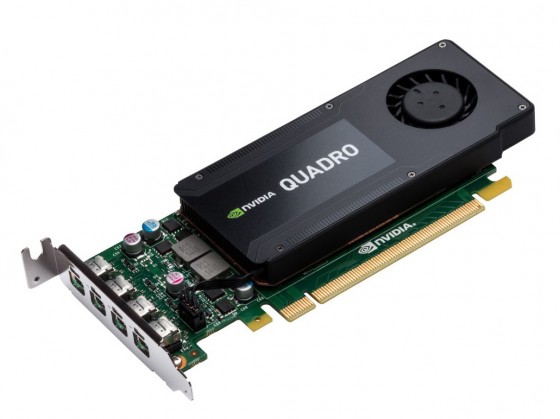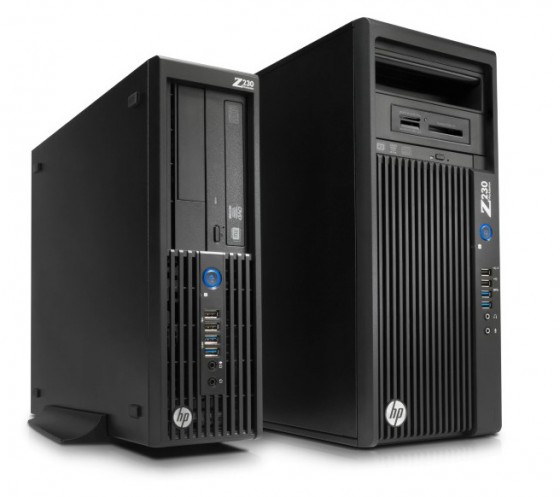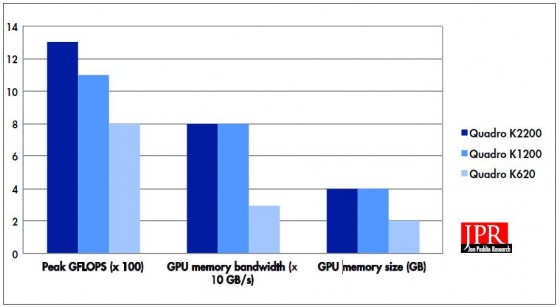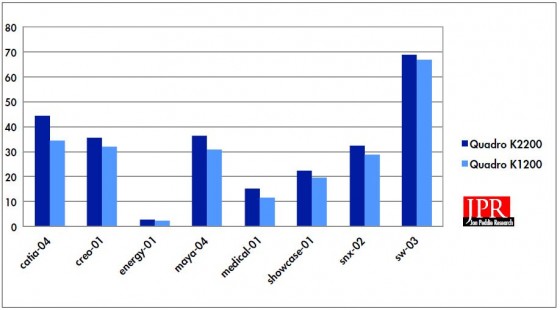Nvidia responds to the growing market for small form factor workstations with a compact entry-level upsell GPU.
By Alex Herrera
It is typically the big, powerful GPUs from AMD and Nvidia that showcase the next generation of new performance. But the top-end add-in boards (AIBs) are not the high-volume sales leaders. Although AIBs like Nvidia’s recent, monster Quadro M6000 (reviewed here) fuel a lot of enthusiasm, we estimate that only around one in every 250 workstation GPUs sold is an in AIB in the M6000’s class.

The vast majority of customers end up buying AIBs in the entry (street price below $350) class, or the AIBs configured in the machines they select. Workstation unit volume today is heavily slanted toward entry-class machines (what we define as selling for less than $2,500), and of that total, a growing number are no longer shipping in a traditional deskside tower, but instead, in the increasingly popular small form factor (SFF) chassis. Over the past five years, SFF shipments have increased from essentially zero to now somewhere around 40% of the entry segment, or in the neighborhood of 20% of all workstations shipped, including mobiles.

Outfitting a performance graphics AIB in an SFF workstation is no simple effort; with the reduced volume come limitations in the length of PCI Express add-in AIBs, the width, and the power available. As a result, SFF models have primarily been restricted to supporting lowest-performing AIBs, or embedded GPUs only. But now, seeing the opportunity for an up-sell to a growing contingent of the user base, Nvidia has another, higher-performing option: the Quadro K1200.

Announced in March 2015, the K1200 has 4 GB of memory attached to the Maxwell-generation GM107 GPU. It is the same GPU used in two K1200 siblings, the entry K620 and the midrange K2200. (Note: to avoid a confusing mix of “M-” and “K-” prefixes in SKUs that are expected to be active for the same lifecycle, Nvidia chose to stick with the “K-” branding, despite the fact that all three of these SKUs are based on Maxwell, not Kepler.)
In terms of performance, features, and price, the K1200 sits between the latter two Quadro SKUs in Nvidia’s current lineup. With the K1200, customers favoring neat and tight SFF workstation models now have less to compromise on, at least when it comes to graphics performance. Additionally, the three workstation AIBs can be compared on performance differences.
Benchmarking the Quadro K1200
As it turned out, we didn’t have an SFF machine in house at the time the K1200 arrived. From one perspective, that didn’t matter. After all, PCI Express is a standard for a reason, so that all the mechanical fingers and electrical contacts mate up, regardless of the AIB or the system. While that’s true, its low profile meant that the retention bracket was about two inches short. To test the AIB, we simply bent the bracket to allow the AIB to slide in correctly.
However, while that worked for our short-term purposes, it’s worth noting that this low-profile AIB truly is designed for SFF systems. Though its price and performance points might entice, and it could be purchased as an upgrade and made to work as we did, you’ll only find this AIB shipping from OEMs with explicit support for low-profile AIBs.

As is our norm for evaluating graphics AIBs, we ran the latest version of SPEC’s venerable Viewperf benchmark. Viewperf 12 specifically stresses the graphics subsystem (including both GPU hardware and driver), such that the rest of the system is less likely to be the bottleneck. As a result, Viewperf gives a good idea of which AIB has the highest potential performance. However, it’s worth noting that the magnitude of any superior numbers does not indicate the level of superiority it will have in a real-world environment where the rest of the system, OS, and application may impose other bottlenecks.
These days, AMD and Nvidia both carefully craft their product lines to ensure there’s no overlap in performance, such that each step up in price delivers an appropriate boost in performance, without too much overlap on a sibling’s performance. Viewperf scores for the K1200 illustrate as much, with the K1200 delivering appealing performance at an attractive price, but still maintaining substantial separation from the next SKU in the line-up, the K2200.
As one would and should expect, the price/performance chart is reversed with the lower priced K1200 delivering better Viewperf scores per dollar than the K2200.

What do we think?
Its price and performance fit a worthwhile point in Quadro lineup, low profile or not. And those configuring a new workstation in a conventional tower or mini-tower chassis might be enticed to give it a try. But because it’s not designed to fit a conventional tower or mini-tower, you won’t be able to order it pre-configured from an OEM in a non-SFF model.
In the SFF segment, we expect the K1200 to be a winner, for two reasons. First, it delivers an appealing level of performance for the price. And second, until the appearance of the K1200, the highest-performing professional GPU Nvidia provided for SFF workstations was the entry-level Quadro K620. While the K620 will satisfy many SFF buyers, the truth is there are now plenty of professionals in CAD, digital media, and finance that can benefit from a higher-performing GPU who also prefer the small form factor. With the K1200, such buyers can now achieve mid-range workstation performance with Quadro, and we expect many will select the K1200 in their next SFF workstation purchase.
Workstation OEMs, however, prefer not to roll in new GPUs mid-life but instead wait for product transitions. We have one coming later this year with the introduction of Intel’s Skylake microarchitecture (and supporting platforms), so expect most, if not all, vendors to provide the K1200 as an option in their refreshed SFF models in late Q3 or Q4.





